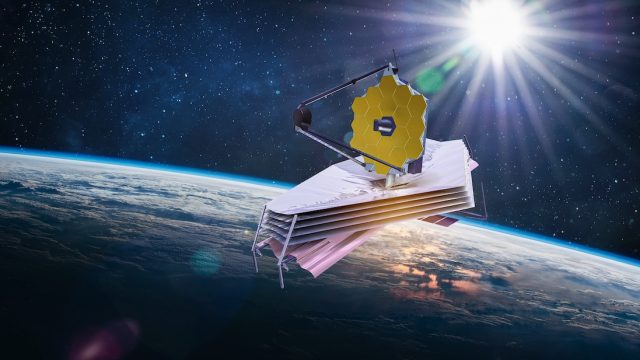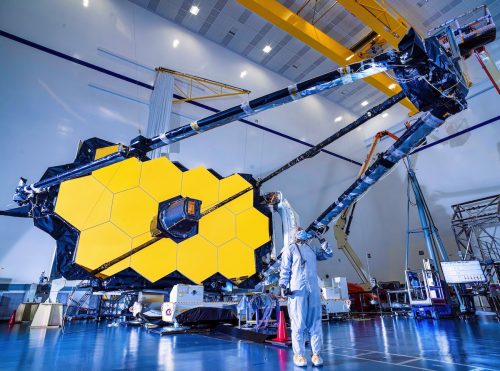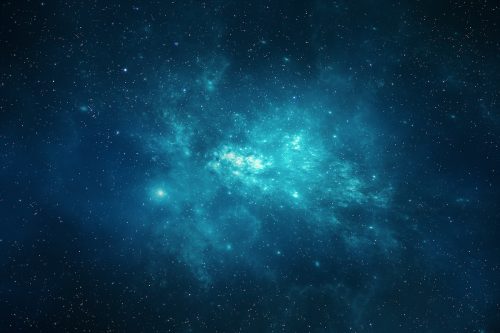Webb Space Telescope Spots Two of the Most Distant Galaxies Ever, Images Stun Scientists: "Stars Million Times Brighter Than Our Sun"
“These observations just make your head explode."

When NASA launched the James Webb telescope, astronomers hoped its infrared and high-resolution capabilities would capture parts of the universe that were too distant for its predecessor, the Hubble. They have not been disappointed. This month, the Webb telescope has recorded images of two of the most distant galaxies ever sighted, thrilling scientists and raising questions about the origin of the universe.
"The universe did not let us down," said Tommaso Treu, a study co-author and professor at the University of California at Los Angeles. "We discovered there are many more distant galaxies than we had been expecting. Somehow the universe has managed to form galaxies faster and earlier than we thought." Read on to find out what the scientists discovered and what it all means.
RELATED: The 10 Most "OMG" Science Discoveries of 2022

In a news briefing last week, NASA announced the discovery of two new galaxies. One is estimated to have formed 350 million years after the big bang, making it the most distant galaxy ever discovered; scientists believe the second is approximately 400 million years old. That's merely a drop in the bucket when it comes to the lifespan of the cosmos we live in.
"The universe is 13.8 billion years old. We're looking back through 98 percent of all time to see a galaxy like this," Garth Illingworth, an astronomer from the University of California at Santa Cruz who helped conceive of the idea for the Webb telescope in the 1980s, told the Washington Post.

Galaxies that far from Earth are composed mostly of hydrogen and helium and may include smaller amounts of other elements. "We're trying to figure out if they are really young stars," Dan Coe, an astronomer with the Space Telescope Science Institute in Baltimore, told the Post. The stars in these early galaxies are a million times brighter than the sun.
The brightness has scientists puzzled, CNN reports. One possibility is that the galaxies were huge and contained many small stars, similar to the galaxies that formed later. Or they could be smaller galaxies with fewer but much brighter stars. Scientists have long believed that these stars, called Population III stars, were the first stars in the universe.

The Webb telescope has been even more powerful and adept at capturing sharp images than believed before the launch, Dr. Jane Rigby, Webb operations project scientist at NASA's Goddard Space Flight Center, told CNN. "These galaxies we're talking about are bright," Rigby said. "They were hiding just under the limits of what Hubble could do. They were right there waiting for us."
"These observations just make your head explode. This is a whole new chapter in astronomy. It's like an archaeological dig, and suddenly you find a lost city or something you didn't know about. It's just staggering," said Paola Santini, a researcher at the National Institute for Astrophysics' Astronomical Observatory of Rome, who was a co-author of the study.

The James Webb Space Telescope, or JWST, was in development for almost three decades at a cost of $10 billion. It's the largest and most powerful telescope ever sent into space. Launched on Dec. 25, 2021, it orbits the sun about one million miles from Earth. The Webb telescope was designed to pick up images that were too old, faint, or far away for its predecessor, the Hubble telescope, to capture. It boasts a massive 21-foot-wide primary mirror composed of 18 hexagonal mirrors and can detect objects 100 times fainter than the Hubble can.

"It's exciting for us, from a theoretical standpoint, that maybe there are some open questions about how these galaxies could have formed their stars so much earlier that we're able to detect large numbers of them," Jeyhan Kartaltepe of the Rochester Institute of Technology told NPR. "We can see that we're really on track to realizing the dream of understanding galaxies at the earliest times," said Illingworth. "The last few months have been exciting, but a huge amount remains in front of us to learn."














